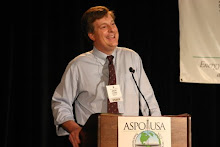By Jessica Fender
The Denver Post
As state funding cuts loom in 2011, leaders of the Colorado State University system have started considering an option unheard of in all but a handful of states: converting to a part-public, part-private structure in which students pay more for costlier degrees.
If implemented, the change could mean CSU's $4,800 annual in-state tuition jumps to about $13,500 for liberal-arts programs and as much as $20,000 for engineering degrees at the Fort Collins campus.
The university system also includes a campus in Pueblo, an online program and agricultural outreach offices in most Colorado counties.
CSU executives earlier this month raised partial privatization as a possible answer to the state's defunding or severely reducing its support for higher-education institutions. Also under CSU's consideration are plans to cap the number of Coloradans who can receive reduced, in-state tuition rates.
CSU chief financial officer Rich Schweigert cautioned that the suggestions are the start of a last-resort contingency plan, and their implementation depends on how the state handles higher-education funding. All of the suggestions would require legislative approval.
"If the sky does fall, we're going to have to do something different," Schweigert said.
Colorado institutions are scrambling to cut costs and find new revenue ahead of a funding crunch that will leave them a collective $230 million-plus short in 2011, when federal stimulus money runs dry.
That shortfall represents more than a third of the state's support for colleges and universities, and the shortfall is only expected to worsen with the state's budget crisis.
CSU's share of the cuts now in place represents about 4 percent of its budget. Officials declined to say how much more the system would have to lose to trigger privatization plans.
Privatization, eschewed by University of Colorado System president Bruce Benson earlier this month, could be problematic since campus buildings were paid for by taxpayers, said Sen. Moe Keller, D-Wheat Ridge, who heads the legislature's budgeting committee.
"I don't blame them for bringing them forward," Keller said of the CSU ideas. "I think it's a really bad idea. (Privatization) will change the nature of higher education and make it unaffordable for a large portion of our middle class."
The hybrid public-private model is extremely rare, according to Vincent Badolato, an education-policy specialist at the National Conference of State Legislatures.
Only Virginia, Pennsylvania and New York have versions of it.
CSU looked to Cornell University in New York as its model, where three colleges and a graduate program are public and seven colleges are funded through endowments and other sources.
The setup results in a $21,000 difference for New York undergraduates between the more costly private programs and the cheaper public degrees.
The latter, says vice provost for Land Grant Affairs Ron Seeber, attract many of the school's less-affluent students.
Schweigert said the CSU programs most ripe for privatization are those that cost the most to provide, such as veterinary medicine.
At the same time, CSU could limit the number of students admitted at lower, in-state rates to the amount that state funding will pay for.
Both scenarios would mean tuition hikes for many students.
And both will be met with resistance from the legislature in 2010, when lawmakers expect CSU and other colleges to start pushing backup plans such as these.
Rep. Jack Pommer, incoming chair of the budgeting committee, said higher education's funding crisis has been a long time in the making as lawmakers for years have shied away from politically inexpedient proposals to allow tuition increases and other fixes.
"I'm very glad CSU is looking at these options. They really don't have a choice," said Pommer, D-Boulder. "If we're not going to plan ahead, at least the schools are."
Actually, the three research universities have been looking into options like this for some time. Even back in 2004, when Betsy Hoffman was president of CU, she was talking about partial privatization.
What we've talked about is usually a "high tuition, high aid" model, which lets schools charge much higher tuition, but also requires them to offer a substantial amount of financial aid to students who can't afford the tuition.
This idea, having some schools privatized, is interesting. One problem with the way we limit tuition increases the the cost differences between different majors. This could help with that.
Jessica Fender: 303-954-1244 or jfender@denverpost.com



